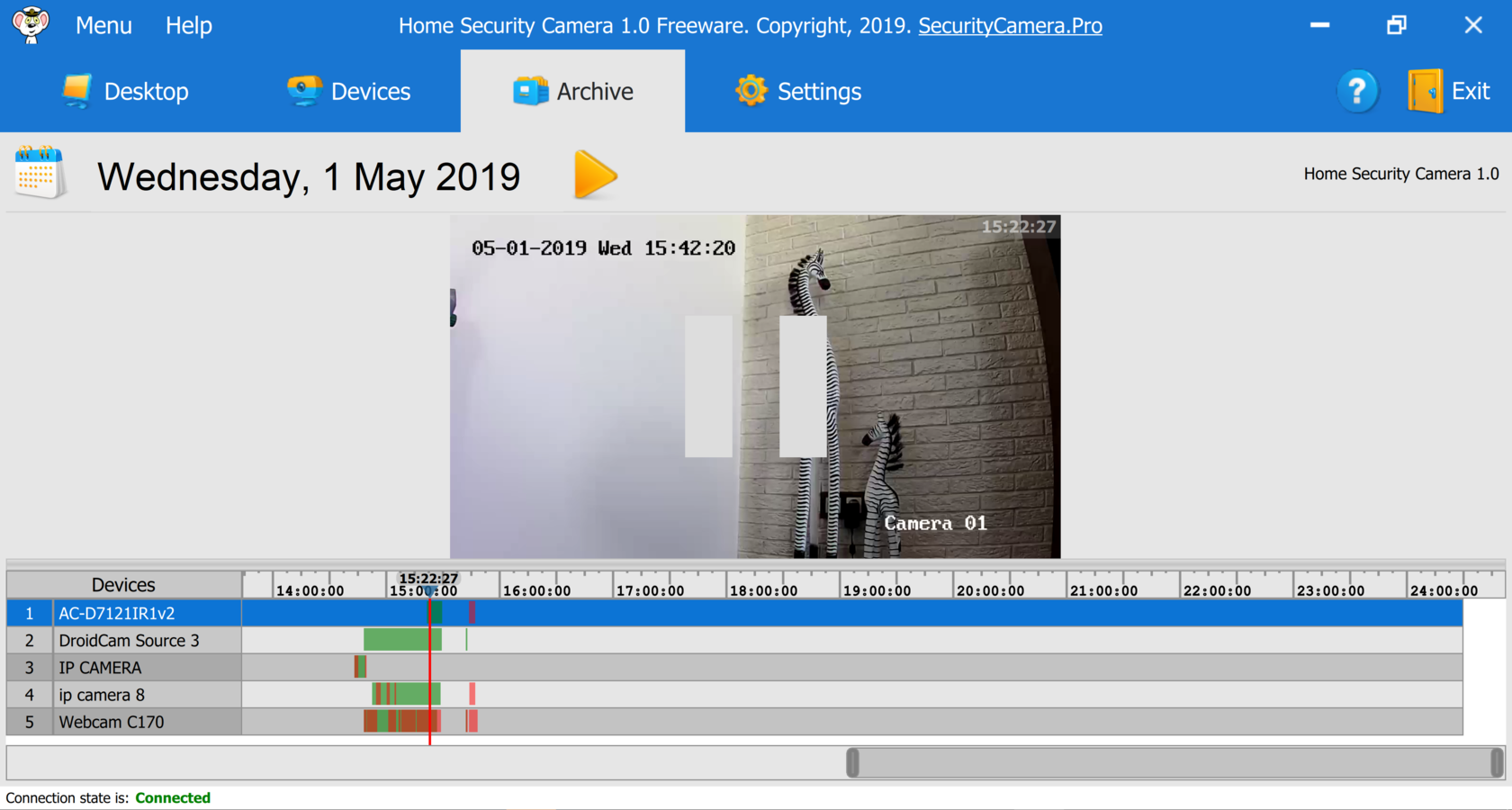

- #Ip camera recorder application license
- #Ip camera recorder application free
Higher Storage Capacity: NVR camera systems can upload footage to cloud-based servers - an advantage of being connected to the internet. Audio Support: Because Ethernet cables can transmit audio natively, camera with a microphone on an NVR system can record audio to the NVR. It doesn’t process video data - a step that’s done at the camera before it’s sent to the recorder. Recorder: The NVR recorder is only used for storing and viewing the footage. They tend to be easier to set up due to their thinner shape, cost less, and be more readily available compared to coaxial cables. However, it’s important to note that not all Ethernet-connected cameras are PoE-capable - many IP cameras still require an Ethernet connection in addition to a separate power supply. This eliminates the need for splitters that are commonly seen in DVR systems. Some camera solutions may come with a Power over Ethernet (PoE) connection, meaning that only one cable is required to support power, video, and audio. They can only run up to 100 meters, but have a number of advantages over coaxial cables. 
Ethernet Cables: If they’re not wireless, IP cameras typically connect to the recorder via Ethernet cables.
#Ip camera recorder application license
Advanced hardware on IP cameras open the door to intelligent video analytics like license plate and facial recognition. IP cameras are typically more robust, and able to record and transmit audio in addition to images.
 IP Cameras: NVR systems utilize IP cameras, which are capable of processing video data before relaying it to the recorder. NVR System Components - Pros, Cons, Differences:
IP Cameras: NVR systems utilize IP cameras, which are capable of processing video data before relaying it to the recorder. NVR System Components - Pros, Cons, Differences: 
DVR recorders also have a fixed number of audio input ports, which limits the number of cameras that can record sound.
Audio Limitations: Standard coaxial cables don’t natively transmit audio signals - an added RCA connection is required to support it. As a result, every camera in a DVR system needs to be connected to the recorder as well as a separate power source. AD Encoder: DVR recorders rely on AD encoders to process raw video data from the camera into viewable footage. Audio is a limitation since standard coaxial cables are not able to support audio transmission. Coaxial cables are wider and stiffer than Ethernet cables, which can make installation a challenge. This means two types of cables are needed - one for power and one for video transmission. Coaxial cables - unlike PoE cables - do not supply power to the camera. Coaxial Cables: The analog camera connects to the DVR through a coaxial cable, which can run up to 500 meters but could result in some limitations. Compared to an NVR system, most DVR cameras are less complex and expensive. Analog cameras transmit analog signals to the recorder, which then processes the video data. The reason why DVR security systems are typically priced lower compared to NVR systems is due to the camera. Analog Cameras: DVR systems typically use analog security cameras (otherwise known as CCTV cameras). Unless they’ve been reconfigured, the DVR connects to an analog CCTV system via a coaxial cable, while the NVR connects to an IP camera system over an Ethernet or WiFi connection.ĭVR System Components - Pros, Cons, Differences: DVR systems process data at the recorder, while NVR systems encode and process data at the camera before transmitting it to the recorder for storage and remote viewing. A DVR converts analog footage into a digital format, while an NVR typically only works with digital footage. The main difference between the network video recorder (NVR) and digital video recorder (DVR) is in how they process raw video data. #Ip camera recorder application free
Try Verkada risk-free for 30 days, free shipping both ways.








 0 kommentar(er)
0 kommentar(er)
